History and Values


The times I met Versace | by Maria Teresa Rubbiani
A ceramist who has spent his whole life working in the ceramic industry, Agostino Salsedo is also well known in the Sassuolo ceramic district as “the Versace man”. When he was about forty years old, he was working at Cerdisa, a historic Sassuolo-based company founded in 1959.
Born in Tunis to Italian parents, Salsedo is one of the many ceramists who trained at the Ballardini Institute in Faenza and was taught by artists of the calibre of Angelo Biancini and Carlo Zauli. “Between 1980 and 1995, I regularly met Versace in person,” he says. “My company had given me the job of liaising with him. Versace wanted just a single contact person, and that person was me.”

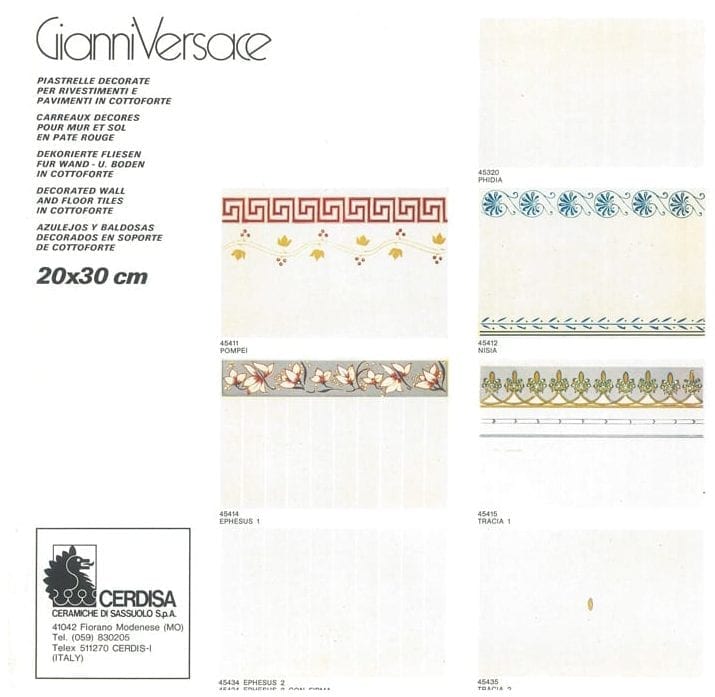
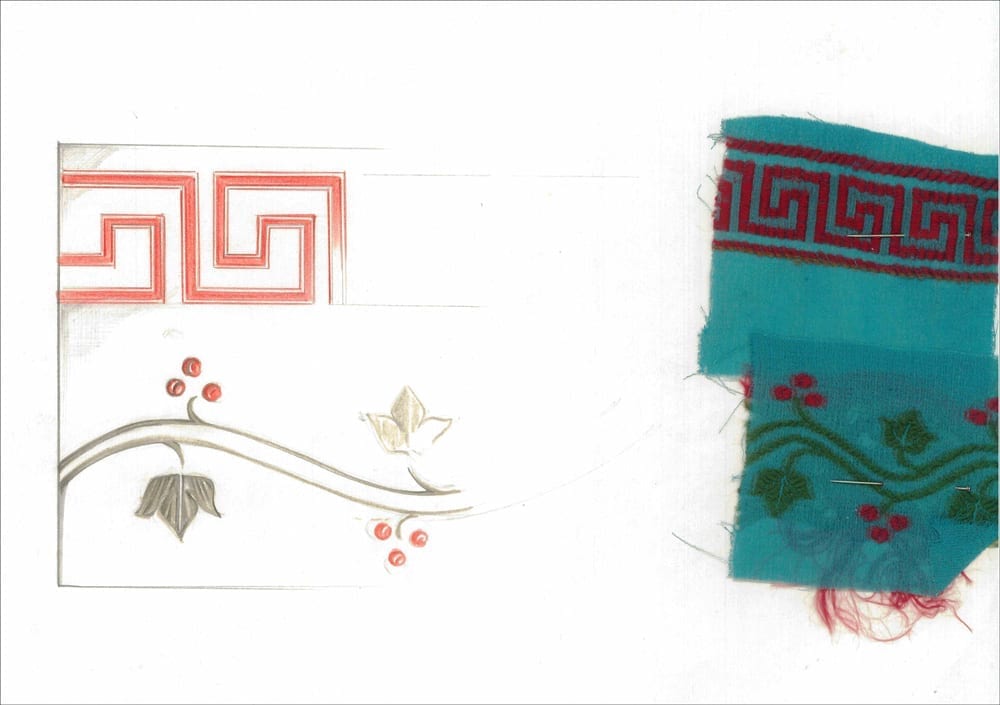
Photo: Portrait of Gianni Versace (from the photo archive of the review “Cer il giornale della ceramica”); page of a historic Cerdisa catalog dedicated to the Versace line; original sketch of a Versace graphic for Cerdisa.
Salsedo remembers Versace as expansive, mercurial and full of ideas. “When he had an idea, I had to make a note of it straight away as he was a very quick thinker and immediately knew what he wanted.” Versace had fabric samples sent to Salsedo to serve as inspiration for decorations, along with handmade sketches by the fashion house’s designers that were to be followed in creating the Versace line tiles.
(Above: “Olimpia” tile, Marmi series, produced by Cerdisa, Fiorano Modenese, MO. 1980, glazed cottoforte with silkscreen printing decoration, 20×30 cm. Housed in the “Centro di Documentazione dell’Industria italiana delle Piastrelle di Ceramica” in Sassuolo, MO.
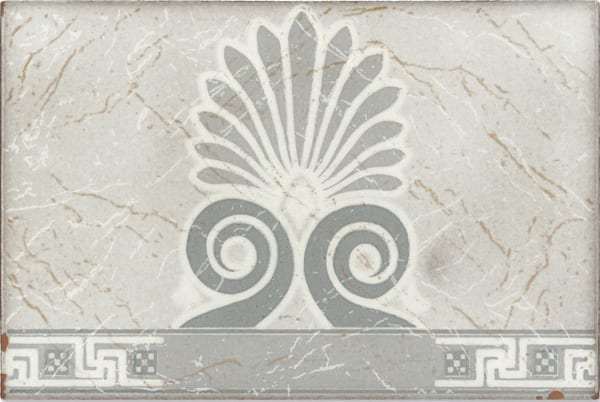
The account of the collaboration between Cerdisa and Versace is just one of the many different stories collected by Mater Ceramica, the nationwide project forming the initial nucleus of a centre of documentation for Italian ceramic production. Financed by the Italian Ministry for Economic Development, it is an ambitious, cross-cutting project covering all areas of Italian ceramic production: industry, craftsmanship and art. It aims to interconnect and give visibility to the many centres of ceramic culture present throughout Italy and to gather together documentation on both contemporary and historical ceramic production. Between 2017 and 2019, researchers working on the Mater Ceramica project have collected together and collated an enormous quantity of data and information in a geo-referenced database of production centres. The information covers more than 3,000 craft workshops, 500 industrial companies complete with historical and contemporary data, more than 4,000 industrially made ceramic tiles dating back to the beginning of the 20th century, 2,000 architects, ceramists, designers and artists, around fifty towns and cities renowned for their traditional ceramic production complete with ceramic-themed tourist routes, 150 ceramic museums all over the country, 10 national research centres and 54 ceramic training schools.
This enormous quantity of data has been collected together on the website of Mater Ceramica, which is soon to be launched online.
The database has also spawned a number of bilingual Italian and English publications by the partners involved in the project: Confindustria Ceramica, Associazione Città della ceramica (AiCC), Museo Internazionale della Ceramica in Faenza (M.I.C.) and Centro Ceramico.
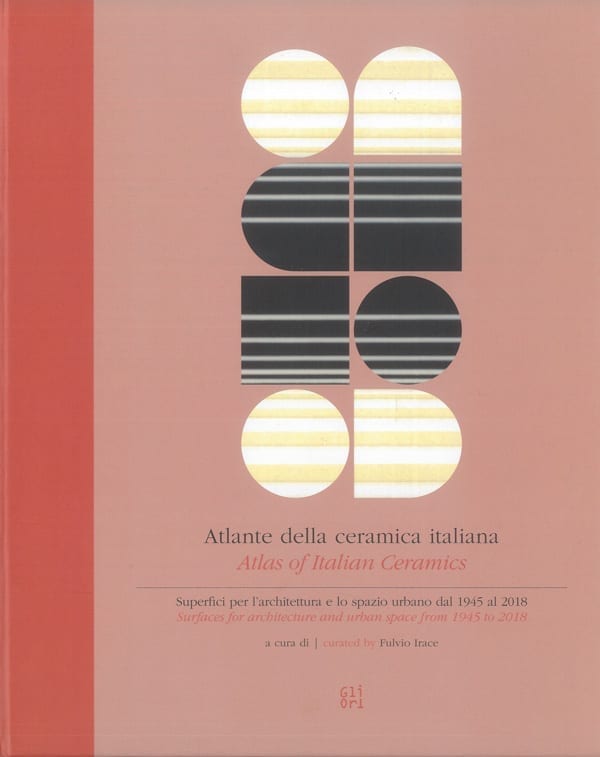
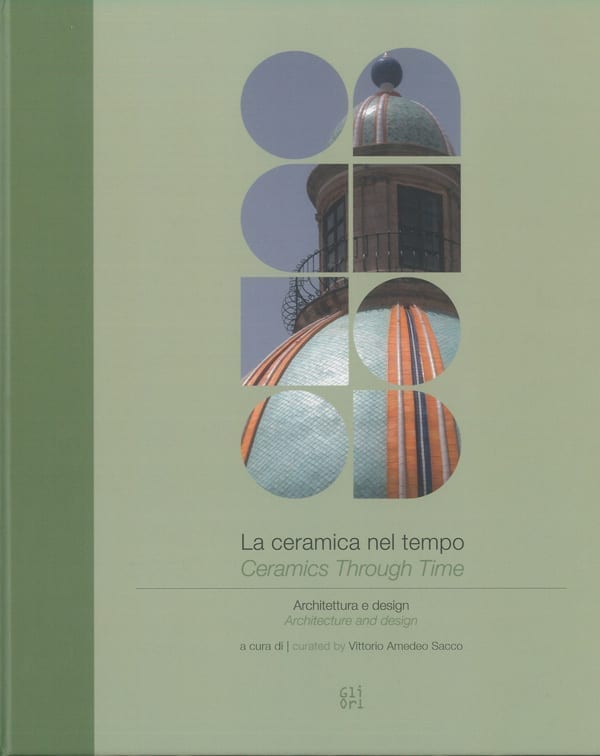
The book La ceramica nel tempo (Ceramics through time) by Vittorio Amedeo Sacco offers a journey into the world of ceramics through the centuries and features a wealth of images and information on ceramic tiles in the pre-industrial age and the design of household ceramics.
The Atlas of Italian Ceramics explores the development of industrially-produced ceramic tiles from the period following the Second World War to the present day. Fulvio Irace, a professor at the Milan Polytechnic, was given the task of editing the book and writing a critical essay featured in the publication and entitled: “From tiles to surfaces: an Italian story”. Irace’s essay analyses the development of ceramic products in terms of their technical and aesthetic aspects and applications, focusing on the significant changes they have undergone over the decades. In particular, he explores the close connection between the Italian ceramic tile industry and its sociocultural context against the backdrop of the history of Italian design and manufacturing.
The volume is illustrated by a series of infographics devoted to ceramic producers, technological development and economic data as well as a selection of about a hundred product sheets from Mater Ceramica spanning 70 years of production from 1945 to the present day. The volume also contains focus sections covering several different topics: the relationship between the ceramic industry and trade magazine advertising by Maria Teresa Feraboli; collaborations with fashion designers by Maria Canella; collaborations with artists by Elena Dellapiana; and technological evolution by Giorgio Burzacchini.
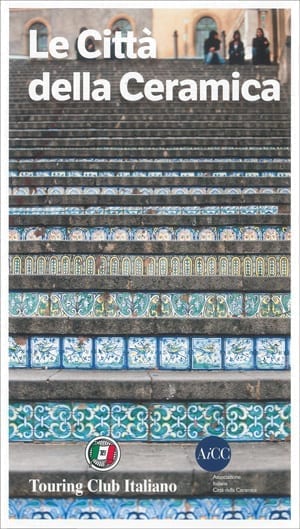
The Mater Ceramica project has also resulted in the publication of a tourist guide entitled Le città della ceramica (Cities of ceramics) by Touring Club Italiano, which contains information on ceramic-themed tourist itineraries that can be organised in Italy.
Further publications include the volume La ceramica artistica in Italia (Artistic ceramics in Italy) devoted to the artisanal sector and an Italian/English Glossary containing technical terms used in both the industrial and artistic ceramic sectors.
Mater Ceramica is a highly innovative brand heritage project in which the brand is represented not by the trademark of a single company but by the Made in Italy ceramics label in its broadest sense. The project adopts a cultural approach in order to promote awareness and appreciation of the value of Italian ceramic products and to disseminate knowledge of their history and modern-day production. It features a wealth of information, images and stories of men, women, companies, craftsmen, entrepreneurs and artists and the areas in which they operate and pays tribute to a rich and highly diverse cultural and industrial tradition.
April 2020



